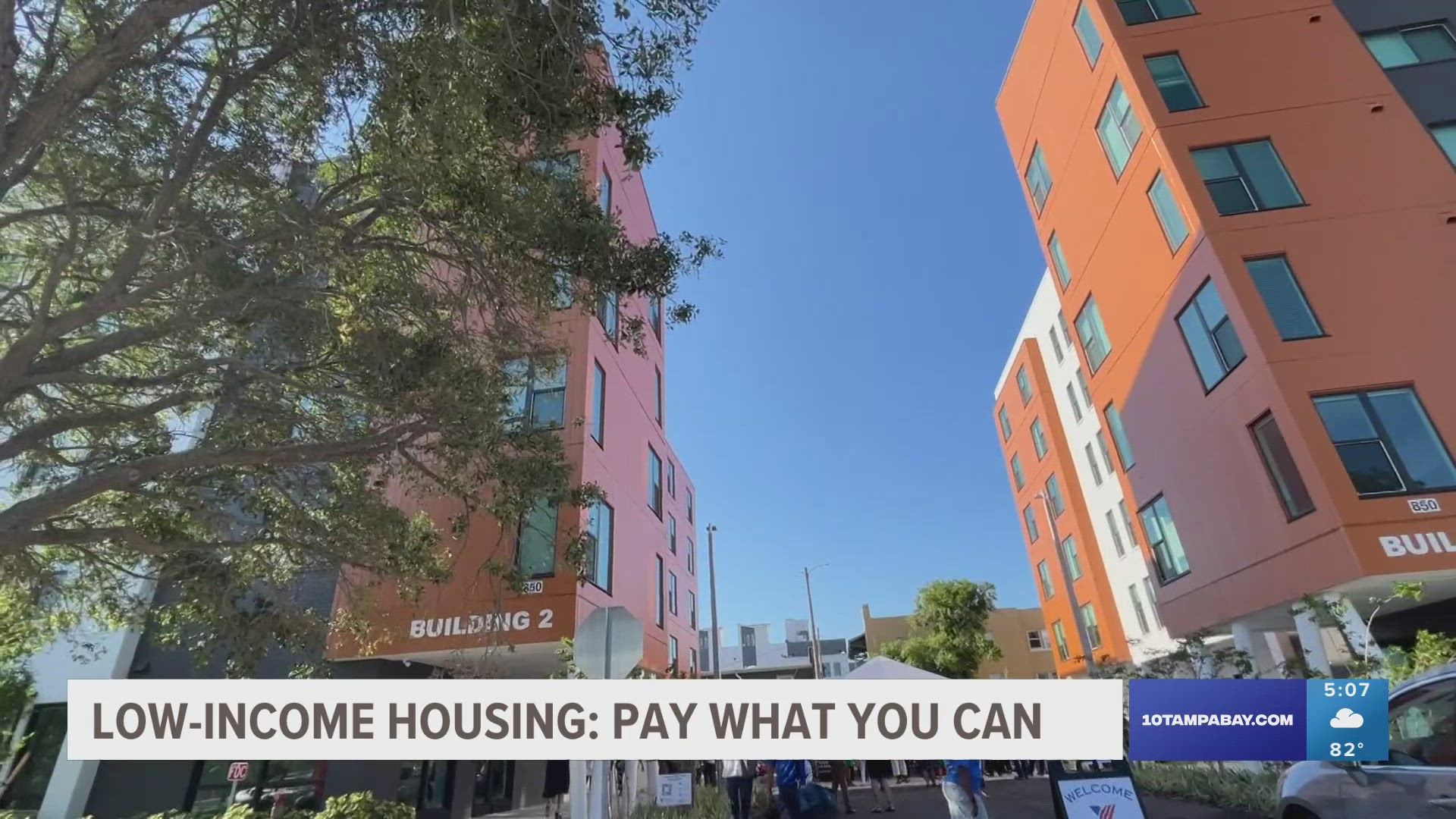ST. PETERSBURG, Fla. — Dozens of people in Pinellas County now have a place to call home after experiencing homelessness, thanks to a new development completed by Volunteers of America.
The new residents pay what they can in rent and are given the resources needed to start a new chapter.
For Walter Sloan, an apartment means stability and opportunity — two things he didn't have while homeless.
"Today means everything, and I am just at a loss for words to be in this situation because when I got here 19 months ago, I didn't see this coming," Sloan said.
After a workplace injury left him unable to make a living, he found himself on the streets, waiting for his disability case to come to an end.
"That was June 6 of 2018, and my life has never been the same since," Sloan said. "So I've actually been homeless since then. I've stayed in numerous shelters, slept on this person's couch, that person's couch.
"I initially came back here to Florida to finish my disability case, and it didn't go like I thought it would. I ended up losing everything while I was here, and that's what brought me to where I'm at now and ended up in a shelter yet again."
With major increases in housing costs everywhere, budgeting for rent can be an enormous challenge for some. According to the U.S. Department of Housing and Urban Development, there was a 12 percent increase in homelessness nationwide in 2023.
Pinellas County ranks fifth in the nation for large urban areas experiencing homelessness. Seeing the need and the challenges, Volunteers for America found a way to help.
"Residents of St. Pete that were living in a shelter, in a tent, and we moved them to a safe place to go home, totally furnished," said Janet Stringfellow, the president and CEO of Volunteers of America Florida.
The Innovare apartment complex is located in downtown St. Pete. It's near a bus stop. Each unit is fully stocked with dishes, towels, sheets and everything else residents could need to thrive. Residents will also work with counselors and caseworkers to help them find and keep jobs, get involved in the community and be a support and resource in any way they may need.
"The wraparound support services they need — they're all individualized, they're all based on where they are and where they want to go," Stringfellow said.
Some 26 of the units are for those with extremely low income — 24 units are workforce housing. For Sloan, it's a 180 from what became his new normal.
"When you're actually out here not having a place to go and not being able to shower and brush your teeth and all that, it's scary because you don't know what you're going to do from not just one day from the next day, but minute to minute, hour to hour," he said.
Now, he's not in survival mode. He has a walk-in closet, a desk, and even an air fryer.
While he adjusts to having his own apartment, Sloan said his next step is to find ways to pay it forward.
"Help somebody else," he said. "Spread the news and share what I've been given. Give back what's been freely given to me."
More than 100 people are on the waitlist to live in the apartment units for extremely low income. The first month of rent is covered, then residents pay what they can based on what they earn.

